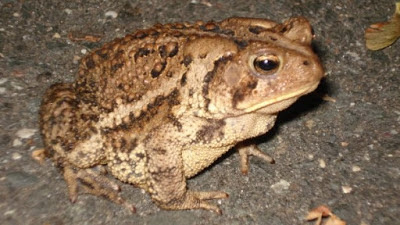Dryptosaurus was a meat-eating dinosaur that lived in what is now New Jersey, on the East coast of the United States during the Late Cretaceous Period, 67 million years ago. From snout to tail it measured about twenty five feet long. The genus name, Dryptosaurus, translates to "Tearing Lizard/Reptile" and the species name, aquilunguis, translates to "Eagle Claw" in reference to this dinosaur's huge, curved claws, which it possessed on its hands. Dryptosaurus was a tyrannosauroid, closely related to Eotyrannus, from England, Guanlong, from China, and to a lesser extent, Tyrannosaurus rex, from Western North America.
 |
| Dryptosaurus life reconstruction by Christopher DiPiazza. |
Dryptosaurus was one of the first prehistoric dinosaurs to be recognized by science in the United States. Discovered only eight years after America's first discovered dinosaur, Hadrosaurus, which was also a resident of what is now New Jersey. It was originally given the genus name, Laelaps, which is the name of a dog from Greek mythology that always succeeded in catching its prey. Despite being a really cool name, it was soon realized that the genus name, Laelaps was already assigned to...a mite, and thus the dinosaur was changed to Dryptosaurus instead.
 |
| Dryptosaurus skeletal mounts on display at the New Jersey State Museum. |
Dryptosaurus is interesting because it was a more basal kind of tyrannosauroid, like Guanlong and Eotyrannus, yet it lived much later, during the very end of the Mesozoic, at the same time as the more specialized short-armed, two fingered, tyrannosaurids, like Tyrannosaurus. Dryptosaurus was sort of a relic of it's time, exhibiting adaptations of predators from long before. Other than it's three-fingered hands already discussed, Dryptosaurus also possessed lighter, blade-like teeth which are in contrast to the more robust teeth of its relatives like Tyrannosaurus. These ancestral features could have had something to do with the fact that when alive, Dryptosaurus lived isolated from the western dinosaurs of the late Cretaceous, like Tyrannosaurus and Triceratops, by a shallow sea running longitudinally down most of the center of what is now the United States, called the Western Interior Seaway. Since it wasn't in competition with its western relatives due to geographic isolation, it may have retained its the more generalist adaptations of its ancestors.
Dryptosaurus stands out among tyrannosauroids because its claws, especially the ones on the first digit of each hand, were the longest in proportion to the rest of the body. It's arms were also not quite so long when compared to more basal tyrannosauroids, but still were certainly longer than those of more specialized tyrannosaurids, like Tyrannosaurus. Despite the fact that it is only known from bones, Dryptosaurus likely had feathers. We can assume this thanks to fossilized feathers on other tyrannosauroids, namely Yutyrannus and Dilong.
 |
| Baby Dryptosaurus (based on bones of other kinds of baby theropods) investigates a horseshoe crab. Sea creatures may have been familiar cohabitants to Dryptosaurus. |
Not much is known about Dryptosaurus' environment since the east coast of the United states has lots of human development, and therefore is more difficult to excavate for fossils now. However, there are known fossils of duck-billed dinosaurs, armored dinosaurs, and crocodilians from the same area. Since its environment was coastal, Dryptosaurus also may have taken advantage of aquatic animals as food like beached fish and other marine creatures, or perhaps turtles coming to shore to lay eggs.
That is all for this week! As always feel free to comment below or on our facebook page!
References
Brusatte, S. L. and Benson, R. B. J. and Norell, M. A. (2011) The Anatomy of Dryptosaurus aquilunguis (Dinosauria: Theropoda) and a Review of its Tyrannosauroid Affinities. American Museum Novitates, 3717 . pp. 1-53. ISSN 0003-0082
Cope, E.D. (1866). "Discovery of a gigantic dinosaur in the Cretaceous of New Jersey." Proceedings of the Academy of Natural Sciences of Philadelphia, 18: 275-279.








